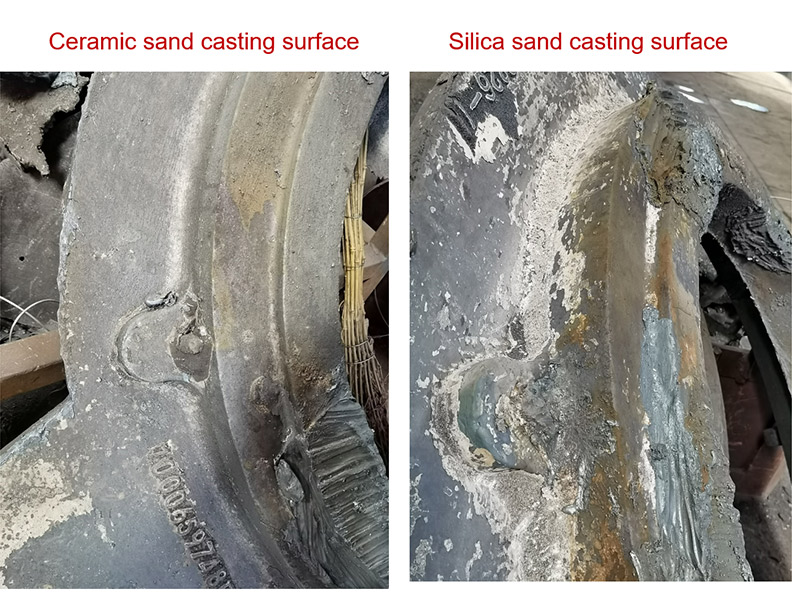Sand Casting Manufacturer A Comprehensive Overview
Sand casting, a process that has been practiced for centuries, plays a vital role in the manufacturing of metal components across many industries. As a leading method of production, it offers several significant advantages, making it a preferred choice for many manufacturers. This article delves into the key aspects of sand casting manufacturers, their processes, benefits, and the essential factors to consider when choosing a sand casting service.
What is Sand Casting?
Sand casting is a versatile and widely used metal casting process that involves creating a mold from sand. The mold is formed by compacting a mixture of sand, clay, and water around a pattern of the desired part. Once the mold is created, molten metal is poured into it to form the final product. After cooling, the mold is broken away to reveal the cast object. This process is adaptable for many materials, including aluminum, iron, and bronze.
The Sand Casting Process
The sand casting process can be broken down into several key steps
1. Pattern Making The first stage involves creating a pattern that represents the final product. This pattern is usually made from materials such as wood, metal, or plastic and is slightly larger than the desired final part due to the shrinkage of the metal as it cools.
2. Mold Creation The pattern is placed in a flask, and sand is packed around it to create a mold. The sand mixture often includes a bonding agent like clay and was wetted with water to improve cohesion. The mold is then compacted, and the pattern is removed, leaving a hollow cavity that mirrors the part's shape.
3. Melting Metal The chosen metal is melted in a furnace at high temperatures until it reaches a liquid state. This process requires careful control of temperature to ensure the metal’s properties are optimized.
4. Pouring Once the metal is molten, it is poured into the mold cavity. Precision during this step is crucial to avoid defects and ensure that the mold is filled correctly.
5. Cooling After pouring, the metal must cool and solidify, which allows it to take the shape of the mold. The cooling time varies depending on the size and thickness of the part.
6. Mold Removal Once the metal has cooled sufficiently, the sand mold is broken away, revealing the cast part. The sand can usually be recycled for future molds.
7. Finishing The final stage involves cleaning and finishing the cast part to achieve the desired specifications. This may include grinding, machining, and surface treatment.
Advantages of Sand Casting
sand casting manufacturer

Sand casting offers numerous benefits, making it an attractive option for manufacturers
- Versatility It can be used for a wide variety of metals and alloys, including ferrous and non-ferrous materials
.- Cost-Effectiveness The materials used for molds are relatively inexpensive compared to other casting methods. This makes it particularly advantageous for large-scale production.
- Complex Shapes Sand casting can create complex and intricate shapes that might be challenging or impossible to produce with other forms of manufacturing.
- Pattern Reusability Patterns can often be utilized multiple times, further reducing production costs.
Choosing a Sand Casting Manufacturer
When selecting a sand casting manufacturer, several factors should be considered
1. Expertise and Experience The manufacturer should have a proven track record of delivering high-quality castings. Experience in your specific industry can significantly impact the quality of the final product.
2. Technology and Equipment Modern manufacturers utilize advanced technology and equipment that can improve precision and efficiency. This can include automated sand molding machines and advanced melting furnaces.
3. Quality Control Effective quality assurance processes are critical. A manufacturer should have stringent testing and inspection protocols in place to ensure all castings meet required specifications.
4. Customization Evaluate whether the manufacturer offers the flexibility to customize designs and adapt to specific requirements.
5. Customer Support Reliable communication and support throughout the process can enhance collaboration and lead to better outcomes.
Conclusion
Sand casting remains a cornerstone in the manufacturing sector, providing a reliable method for producing high-quality metal components. By understanding the sand casting process and considering the key factors when selecting a sand casting manufacturer, businesses can ensure they partner with a capable provider that meets their production needs. As industries continue to evolve, sand casting is poised to remain a valuable technique for metal casting, catering to diverse manufacturing demands.
Post time:Th11 . 11, 2024 15:36
Next:sand resin mixture
